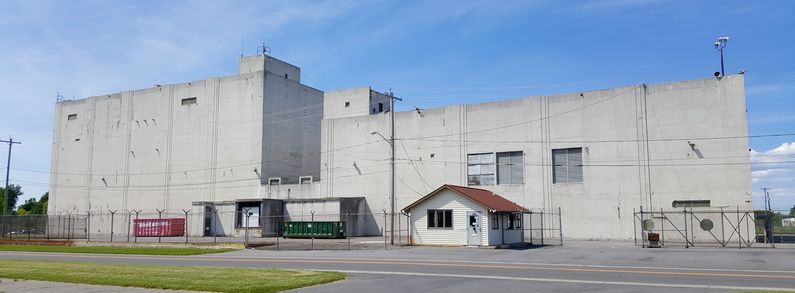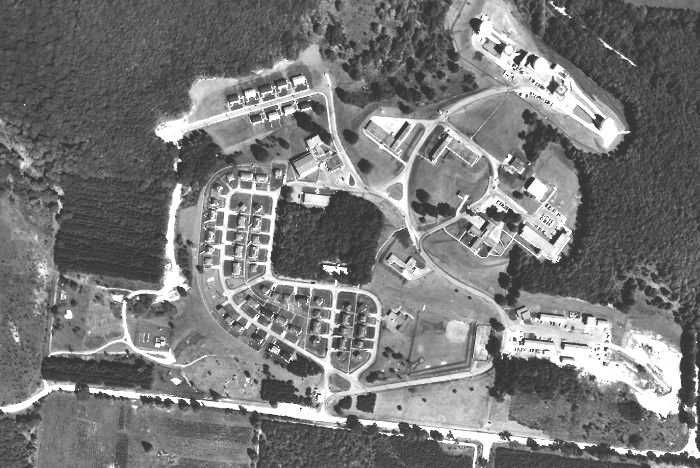RCAF Station Edgar
|
RCAF Station Edgar (1953-1964) - A Cold War Canadian Pinetree Line Radar Station established in 1953. Located near Edgar in Ontario, Canada. Initially assigned a Permanent ID of C-4 and later a Sage ID of C-4. Closed in 1964.
HistoryConstructed between November 1950 and September 1952 and became operational on 15 Jun 1953 as RCAF Station Edgar manned by the 31 Aircraft Control & Warning (AC&W) Squadron. The 31 AC&W was also briefly known as 204 RCAF Radio Station. Initial radar equipment included the FPS-3 search radar, two ISG-98 height-finder radars, and a UPX-6 IFF Set. Manual System OperationIn 1952 the 31 AC&W Squadron moved to RCAF Station Edgar and they were assigned to the No. 3 Air Defence Control Centre (ADCC) who also located at RCAF Station Edgar at the same time. The No 3 ADCC provided command and control over the 31 AC&W Squadron and other subordinate radar stations. During the SAGE System transition, the Sector occupied a temporary Butler Building apart from the main Operations building. In 1960, after a NORAD region re-organization, No. 3 ADCC received its NORAD designation of Ottawa NORAD Sector.
On 13 Oct 1961 manual operations ceased and command and control of RCAF Station Edgar and the now 31 Radar Squadron shifted to the Hancock SAGE Direction Center DC-03 established at Hancock Field near Syracuse, New York. FST-2 Operations continued under Burroughs maintenance until the SAGE annex at RCAF Station Edgar was completed and the new equipment was installed and checked out. The AFTO Form 87 signifying the FST-2 turnover from Burroughs to RCAF Station Edgar was signed on 8 Jan 1963 and the Burroughs contractors departed.
SAGE System TransitionThe transition of the manual GCI system to the automated SAGE system began with the installation of the FST-2 coordinate data transmitter and search radar upgrades. The FST-2 equipment digitized the radar returns and transmitted the digital returns to the SAGE direction center. Under the SAGE System, interceptor aircraft were directed to their targets by the direction center computers and controllers, greatly reducing the need for local controllers and equipment at every radar station. The FST-2 was a very large digital system using vacuum tube technology. Over 6900 vacuum tubes were used in each FST-2 requiring 21 air-conditioned cabinets, 40 tons of air conditioning, 43.5 kva of prime power, and usually a large new addition to the operations building. The FST-2B modification added two more cabinets but with newer solid-state (transistor) technology to process coded responses from aircraft transponders. SAGE System Operation
The site began operation as a SAGE site on 13 Oct 1961. initially feeding the Hancock SAGE Direction Center DC-03. On 14 Oct 1961, the squadron designation was changed from the 31 AC&W Squadron to 31 Radar Squadron (SAGE) indicating the new SAGE System role. On 4 Sep 1963 data and control changed to the Custer SAGE Direction Center DC-06 (Detroit NORAD Sector) in Battle Creek, Michigan. ClosureRCAF Station Edgar and the 31 Radar Squadron ceased operations on 20 Mar 1964 and the disbandment parade was held on 8 Apr 1964. The official closure date was 1 Apr 64. Physical PlantThe physical plant of the site was divided into the main site, a cantonment area, a housing area, and a radio site. The main site housed the operations buildings, the radar towers, and the backup generators. The cantonment area housed the enlisted barracks, the bachelor officer's quarters, the orderly room, the dining hall, the motor pool, and other support buildings. Apart from the main site was a housing area for married personnel that came to contain over 90 sets of quarters (PMQ's) A separate radio site housed the radio equipment for directing aircraft intercepts. Like most early radar stations, RCAF Station Edgar originally had a radio transmitter site and a separate radio receiver site used by local controllers for voice direction of fighter interceptors to their targets. With the SAGE System, the SAGE Direction centers had the primary task of directing intercepts and the local radio sites were reconfigured, usually into a single site that was known as the Ground to Air Transmitter Receiver (GATR) site. The GATR site communicated with the interceptors from either the local site or the SAGE direction center via voice commands and/or a digital data link.
Current StatusIn November 1964, the complex was sold to the provincial government of Ontario for $218,225 to be used as an Adult Occupational Centre. That facility was built but closed in 1999. In July 2011, a developer purchased the property for $2,500 and by the fall of 2011, all the buildings had been demolished. Current satellite views (2021) show only one structure on the site.
See Also:
Links: Visited: No
| |||||||||||||||||||||||||||||||||||||||||||||||||||||||||||||||||
